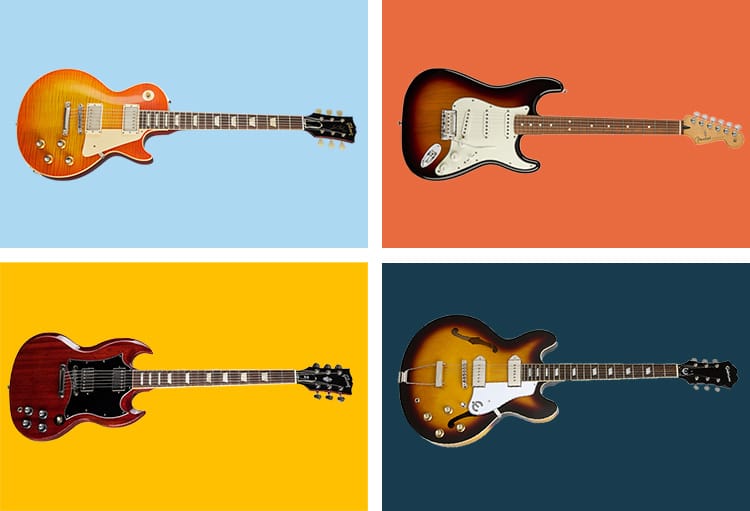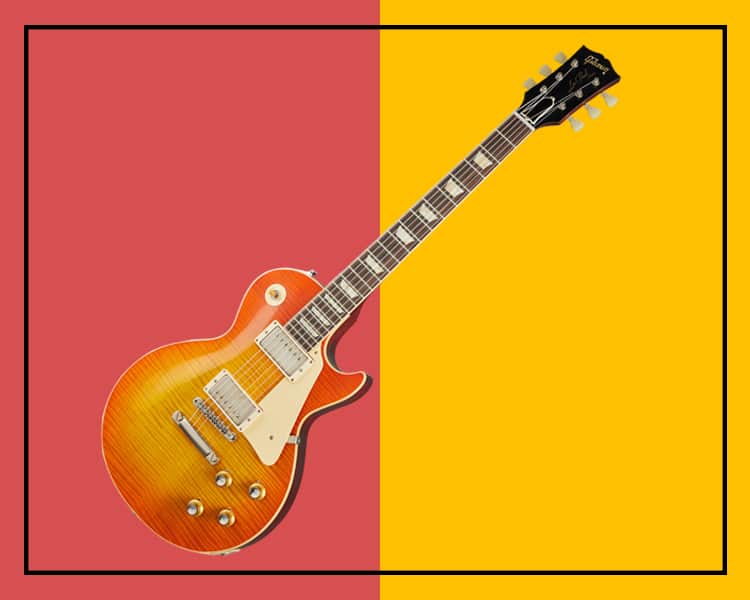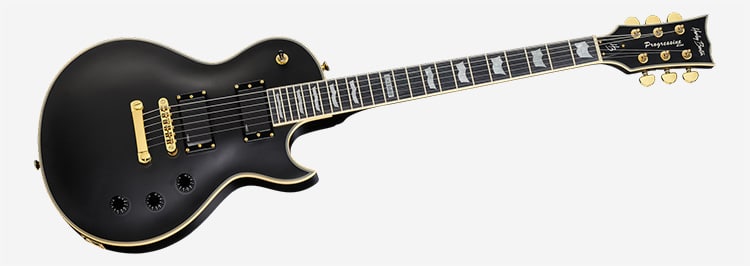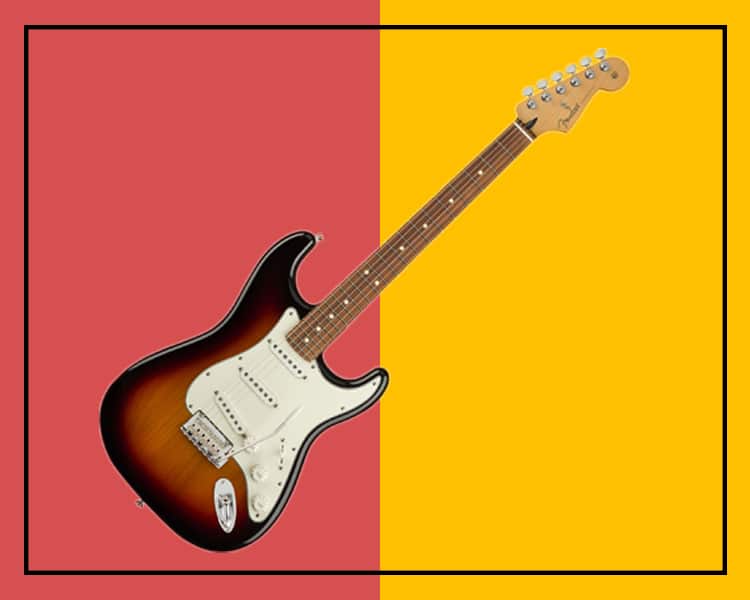Are you looking for your first or next electric guitar, but you're overwhelmed by the many options on the market? Of course you want to make sure you get the best value for your money!
That's a good thing! However, there is no such thing as an absolutely best electric guitar - otherwise every superstar on stage would be playing with the same model. But there are electric guitars that are better or worse suited for different genres and situations.
In this article, I will compare the best electric guitars and give you a cheaper alternative that is similar in general features and sound to the expensive flagship model.
If you are just starting out, you should definitely read my article about the best electric guitars for beginners. There I only compare models that cost less than €500, making them perfect for your first electric guitar. And if you still need an amp, check out my comparison of the best guitar amps.
Buying an electric guitar: Recommendations
The best electric guitar for beginners is the Squier 40th Anniv. Strat (349€) because it's so versatile and doesn't cost a lot of money - you can play all kinds of music with it.
For more advanced players, I recommend the Fender Player Plus Strat (959€) if you want to keep all doors open. But if you only play hard rock and your budget allows it, the Gibson Les Paul Standard 50s HCS (2,390€) is the best electric guitar for professionals and advanced players you can buy.
Read on to find out all the details!
The best electric guitars + equivalent affordable alternatives
Gibson Les Paul: Best Electric Guitar for Rock
The Gibson Les Paul is an electric guitar model that was launched in 1952 and is still in production today, with the shape, materials and electronics of the original model essentially unchanged. It is one of the most famous guitars in the history of rock music.
This electric guitar was made famous by Slash, among others, because he played it for almost his entire career - and still does.
So listen to some Guns n' Roses songs and you'll hear what this guitar sounds like!
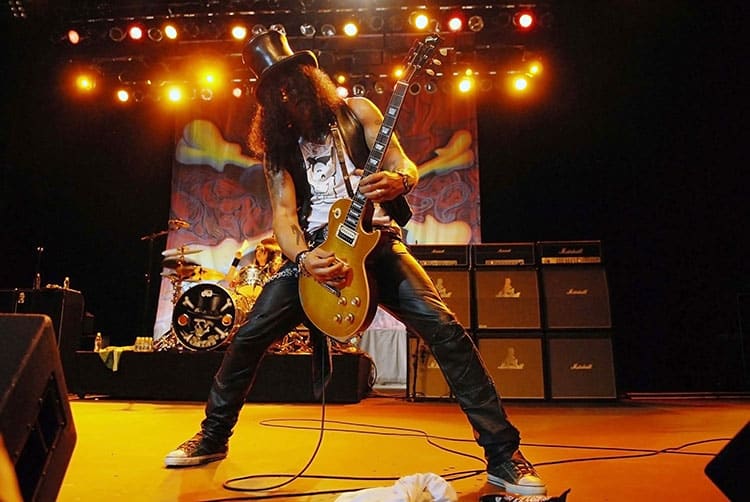
This electric guitar is therefore very well suited for rock, punk or heavy metal. The 2 humbucker pickups produce a very fat and powerful sound that just begs to be distorted.
But this electric guitar has also found its way into completely different musical genres: Bob Marley was also a very famous musician who could almost always be seen on stage with a Gibson Les Paul.
This electric guitar can therefore sound clean and relatively undistorted via a suitable guitar amplifier, such as a Roland JC-120. This is exactly the guitar-amp combination that Bob Marley used very often live.
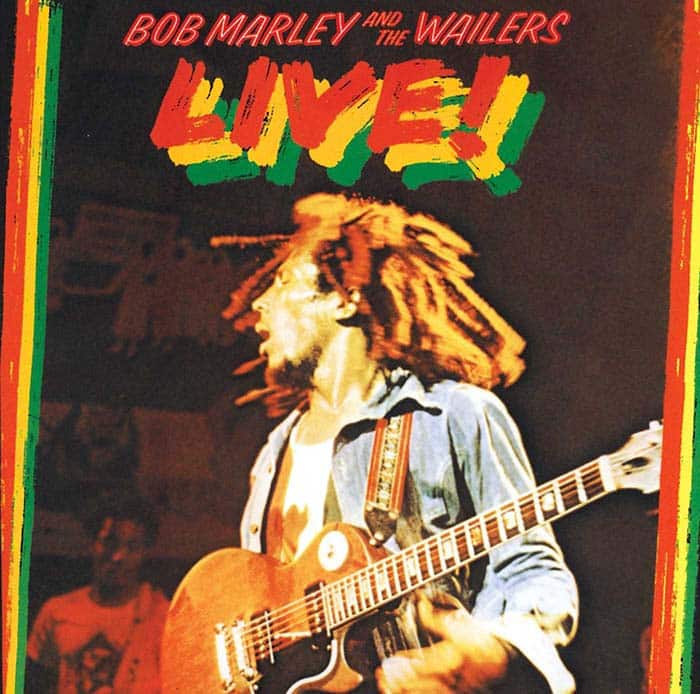
I say relatively, because there will always be a certain amount of saturation on this guitar because of the humbuckers, if compared to a Stratocaster, for example.
But that's exactly what Les Paul guitarists want.
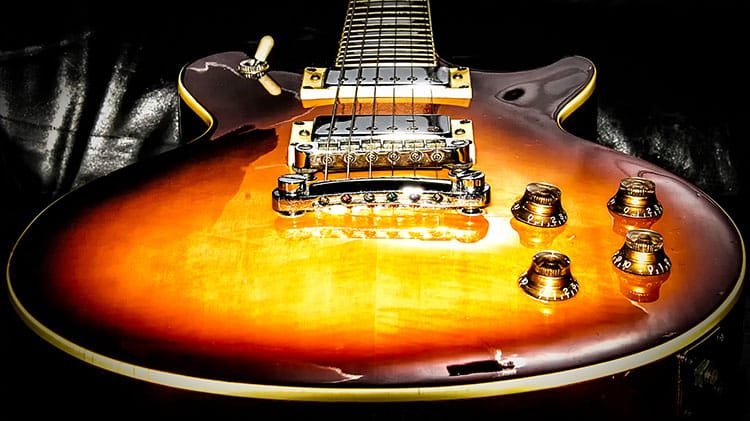
You have 4 controls on the guitar to adjust the tone (dark-bright) and the volume of the 2 humbuckers. It is relatively heavy compared to other models - but you get used to it quickly.
This guitar would be my first choice for genres where the guitar needs to sound fat and distorted, no question. But if I want to play "clean" genres, maybe there are other models that should be more suitable - although a Les Paul is never really a bad choice.
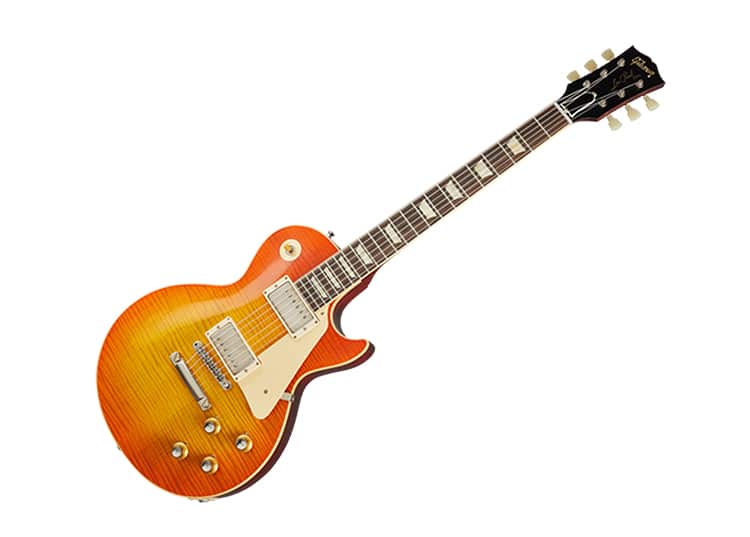
The classic Gibson Les Paul Standard from the 50s costs €2,399 - so it's relatively expensive for beginners. But if you are a semi-professional or professional player, it is definitely worth the investment.
If you're a beginner, or just don't really want to spend a lot on an electric guitar, and you still want that sound, I recommend the Harley Benton SC-1000, which costs just under 200€.
It is well built and sounds similar to the original. However, it has only 3 controls, feels generally cheaper and the final care (oil and varnish) is not comparable - but it costs a twelfth of what the Gibson costs.
And for that, the sound is amazingly good!
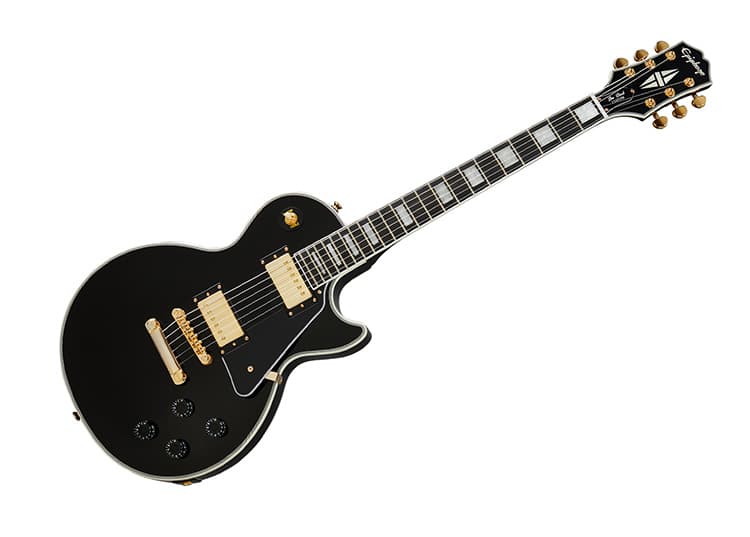
And if your budget is a bit higher after all, I recommend the Les Paul by Epiphone (625€)- a subsidiary of Gibson that makes very good guitars that are cheaper than the Gibson brothers, but sound similar.
In fact, if you can afford it, get the Epiphone definitely before the Harley Benton.
Keep reading: Recording Electric Guitar: A Step-by-Step Guide
Fender Stratocaster: Best electric guitar for all kinds of things
The Fender Stratocaster, colloquially also called Strat, is an electric guitar with a solid body, designed by Leo Fender in the 1950s and produced since 1954 until today.
Together with the Gibson Les Paul, it is considered one of the best electric guitars in the world due to its popularity and widespread use, as well as its influence on the music scene.
Behind the creation of a new line of guitars to build on the success of the Telecaster (more on that later) was Fender's ambition to create a guitar that would bring both technical (including more pickups and the introduction of the vibrato lever) and design innovations (moving away from the traditional guitar shape towards more ergonomic solutions).
The result is a revolutionary design: thanks to its innovative shape, the lightness of the instrument and the easier access to the highest notes on the fingerboard due to the special hollowed-out shape of the shoulder, the Stratocaster was considered the most advanced of all electric guitars at that time.
The sound is brilliant and clean. This electric guitar is very suitable for "clean" genres, such as funk, reggae, blues or surf music.
In 1965, George Harrison and John Lennon of The Beatles used it on many tracks, including Nowhere Man.
Eric Clapton also contributed enormously to the popularity of this electric guitar, as he used it almost exclusively.
And do you remember the song "Smoke on the Water" by Deep Purple? That guitar riff was also played with a Stratocaster!
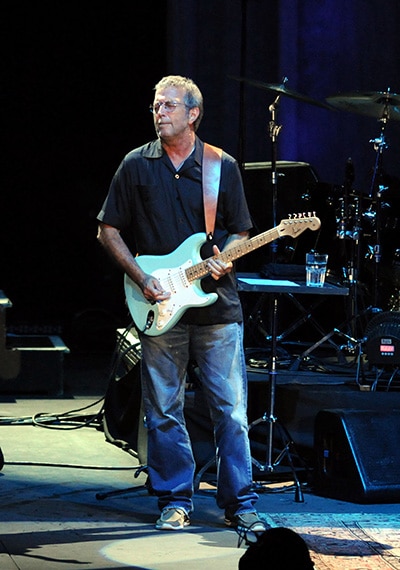
This guitar has also found its use in rock and harder music genres: Later, the Stratocaster was made famous by guitarist Jimi Hendrix, whose style greatly expanded the instrument's expressive potential.
Jimi Hendrix was one of the most famous left-handed guitarists, so his Strat had the cable connector, switch and buttons on the top instead of the bottom.
Keep reading: The 12 greatest electric guitarists in music history
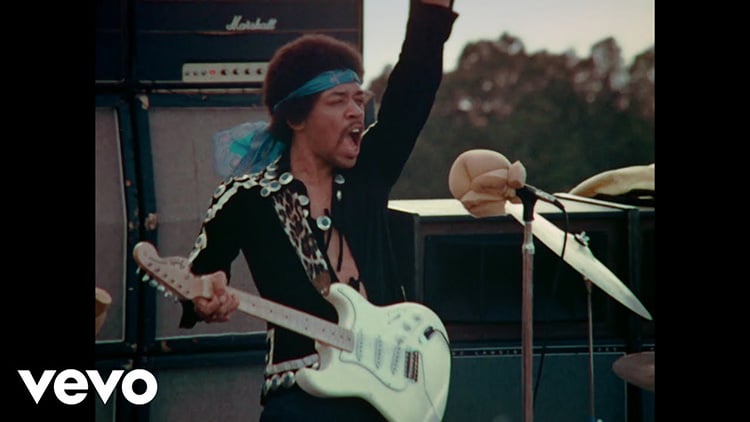
The Stratocaster from Fender is lighter and more ergonomic compared to the Les Paul. The sound has less saturation than the humbucker sound of the Les Paul due to the single-coil pickups.
In my opinion, these features make this electric guitar more flexible to use, because you can always add more distortion afterwards, but you cannot take it away. You can use the amp or a distortion pedal to make the guitar sound really distorted.
I can really recommend this guitar to everyone - unless you really only want to play hard music (AC/DC, Metallica etc.). In that case, a Les Paul would definitely be better.
But if you want an electric guitar that delivers a particularly clean sound but can also sound fat and distorted, then a Stratocaster is definitely the best choice.
Fender itself has many models among the Strats, which differ mainly in the body material.
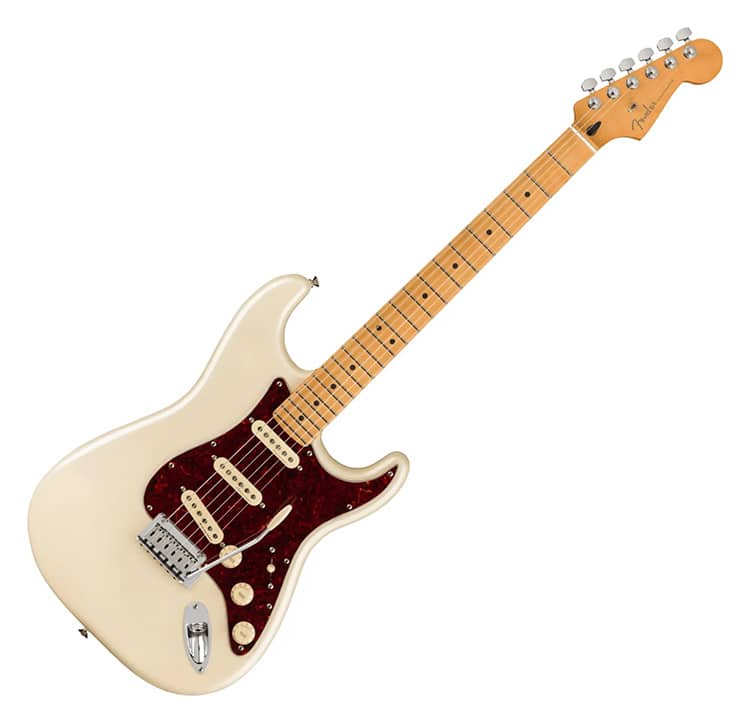
The Fender Player Plus Strat (959€) is a good model, which is also not too expensive. This electric guitar has an alder body, a maple neck and a maple fingerboard.
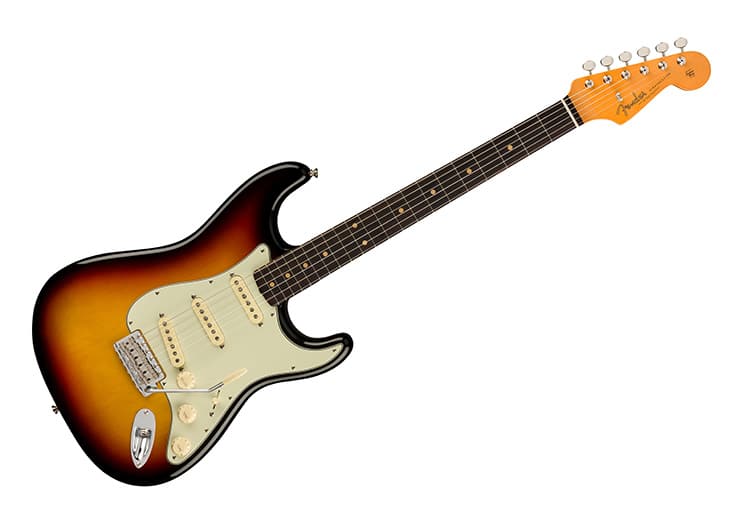
The Fender AV II 61 (2.199€) is the more expensive version, which has the classic sound of the 60s. Unlike the first one, this one has a block glued slab board rosewood fingerboard - hence the price, among other things.
If they are too expensive for you, I highly recommend an electric guitar from Squier. Squier is a subsidiary of Fender that builds affordable brothers of the classic Fender models - similar to Gibson and Epiphone.
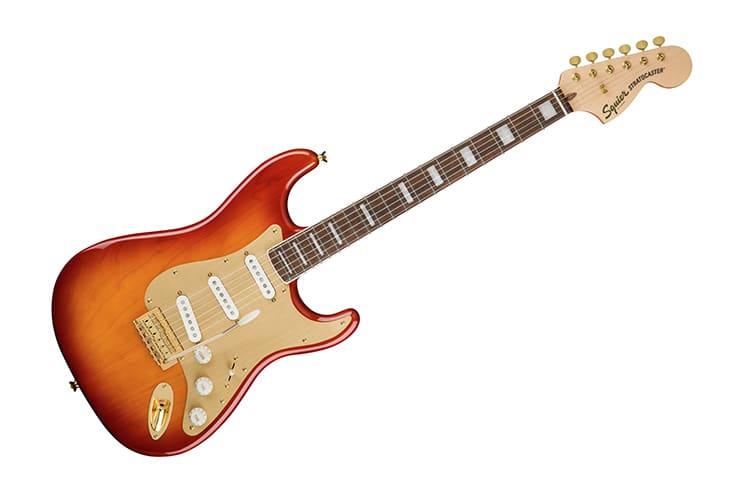
The Squier 40th Anniv. Strat is a very good guitar for beginners and costs only 349€. I myself have had this electric guitar for a very long time, and quite honestly: you need a very good amplifier and very good microphones to even hear a difference to the original Fender Stratocaster. The sound is really great.
Keep reading: DI boxes for a better guitar sound
Fender Telecaster: Best electric guitar for funk
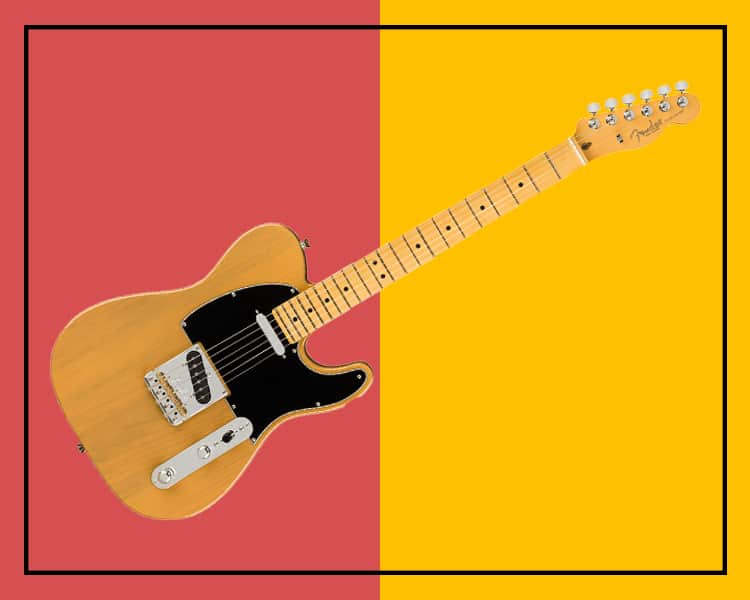
The Fender Telecaster, originally called Fender Broadcaster and often referred to simply as Tele is a solid-body electric guitar model produced by Fender since 1951. It was the first Fender electric guitar to be successfully launched on the market and is considered the predecessor of the Stratocaster.
The Fender Telecaster is a guitar with two single-coil pickups controlled by a 3-position selector switch, a volume control and a tone control.
The solid wood body completely cancels out unwanted resonances and increases the sustain of the strings.
The bridge is fixed, the strings are inserted underneath. The neck, usually made of maple, with a fingerboard of maple or rosewood, is screwed to the body.
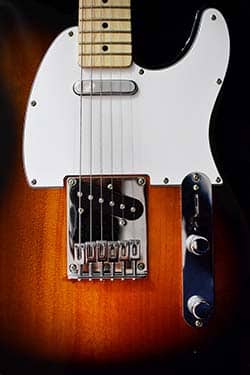
The Telecaster is a versatile guitar: it can switch from the sounds of a steel guitar to the warm tones of a blues guitar while maintaining its own recognizable sound that sets it apart in any situation.
This guitar became famous especially through Keith Richards, who often used it live. Even today, the instrument is popular with many country, blues and rock musicians because of its simplicity.

The guitar is relatively simple, but still very versatile with the 3 positions. The clean sound of this electric guitar is synonymous with "twang" in surfer music or blues, and the distorted one with classic rock 'n' roll - after all, these styles of music were mostly played with the Telecaster in the beginning.
The sound is very similar to the Stratocaster with only 2 pickups switched on, but still a little different. I would say the Telecaster is a bit more muffled and direct in sound.
This guitar is suitable for all kinds of music - but I would recommend it to people who mainly play with relatively little distortion. This is where the Telecaster can really shine and fully develop its potential.
The current popular models from Fender are the Fender AV II 51 TELE MN BTB (2,205€), with an ash body, and the Fender AV II 63 TELE RW WT3TB (2,164€), with an alder body. Both have the classic Telecaster sound and sound nice - I can tell from my experience, as I'm always happy when guitarists with Telecasters come to my studio to record.
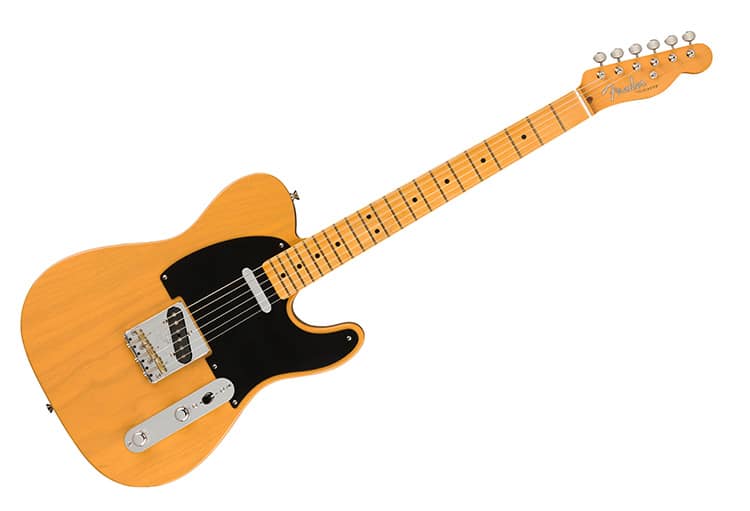
If the Fender models are too expensive for you, you should check out the Telecaster models from Squier. The Squier Affinity Tele MN BB (229€) is a very good model that comes very close to the Fender original in terms of sound.
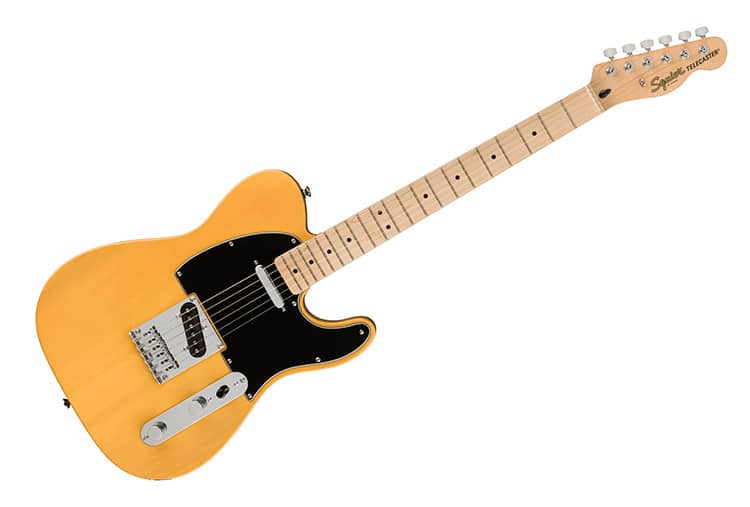
Of course, the workmanship here and there is cheaper than Fender's - but for a tenth of the price, you can't complain.
Gibson SG: Best electric guitar for hard rock solos
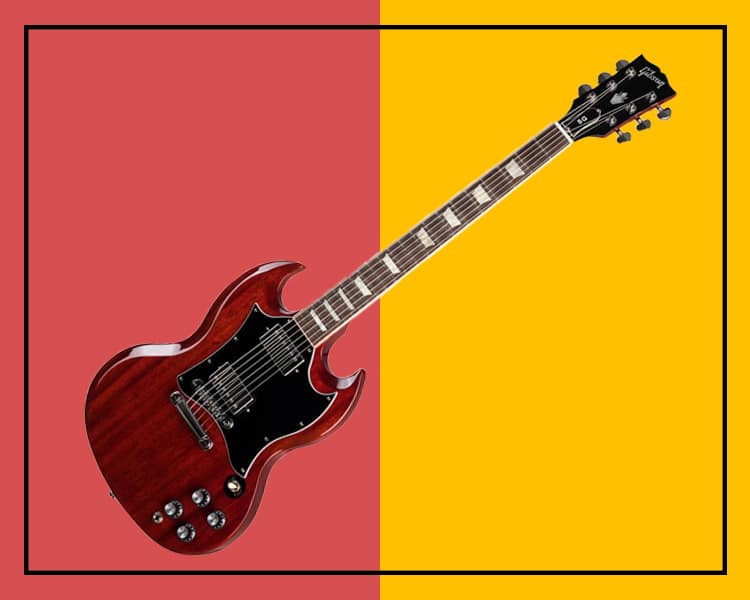
The Gibson SG is a series of solid-body electric guitars manufactured by Gibson since the 1960s. The "SG" stands for "Solid Guitar".
This line represented an attempt to renew the family of the legendary Gibson Les Paul (which had expanded over time and by the early 1960s already included a wide range of budget and professional models).
The purpose was mainly to respond to the emergence of the Fender Stratocaster, whose success - mainly because of its lightweight body - had contributed greatly to the decline in sales of the Les Paul.
The result is an electric guitar with a thinner, more contoured body, with a double cutaway.
This not only made the upper frets more accessible, but also moved the neck-body joint outwards by three frets.
The simpler carcase design lowered the production costs and thus also the sales price considerably.
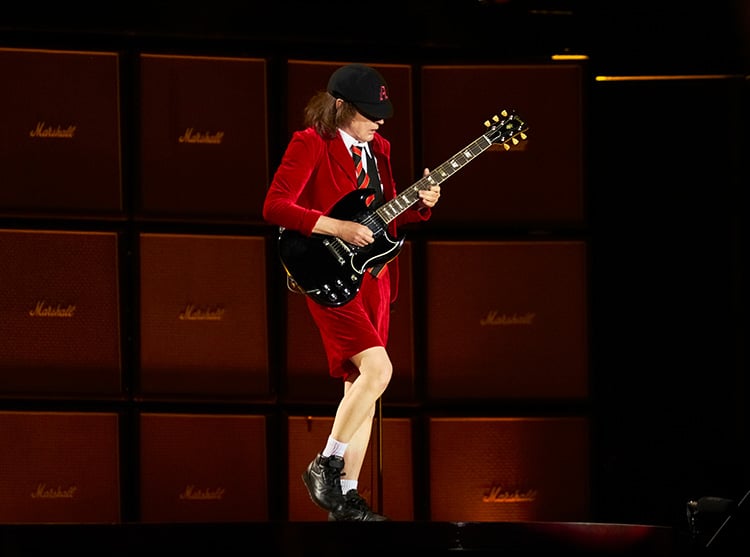
Everyone immediately associates this electric guitar with Angus Young, because he really made it famous worldwide. This guitar is synonymous with AC/DC and their hard-rocking sound!
The sound of this electric guitar is generally brighter and with more highs and mids than the sound of the Les Paul and is also best suited for hard rock. Due to the two humbucker pickups, the sound is nicely saturated from the start and sounds great distorted.
But this electric guitar is also great for blues or funk - you can play it nice and clean. It won't sound as clean as a Strato, but it has a fuller and more powerful sound.
Other famous guitarists who often played the SG were Frank Zappa, Tony Iommi (Black Sabbath) or Robbie Krieger (The Doors).
The neck-body joint in this electric guitar is at the 22nd fret - unlike the Les Paul, which has this joint at the 16th fret. This makes access to the higher frets on the Gibson SG much easier and more comfortable.
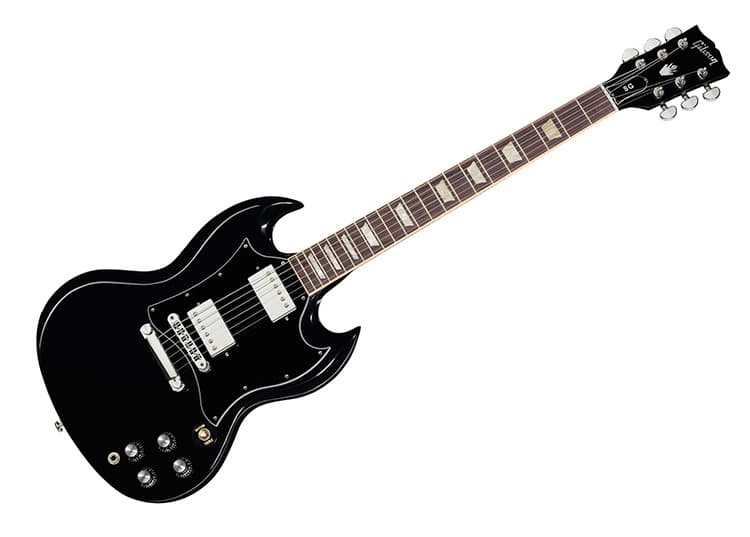
The Gibson SG comes in a couple of versions: The Gibson SG Standard (1,499€) and the Gibson SG '61 Standard (1,698€) are the most popular models, which differ from each other only in the neck profile. Both have the classic mahogany body and neck and rosewood fingerboard, 2 humbucker pickups and 2 volume and tone controls.
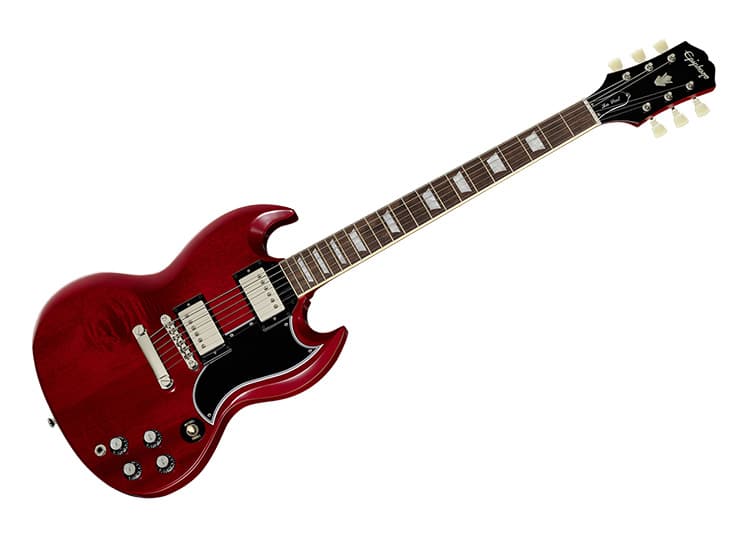
As you can see, both cost significantly less than the Les Paul models - which is also a good argument in favour.
These electric guitars are too expensive for you? No problem. There is of course an SG model from Epiphone, called the Epiphone SG Standard, which costs only 448€.
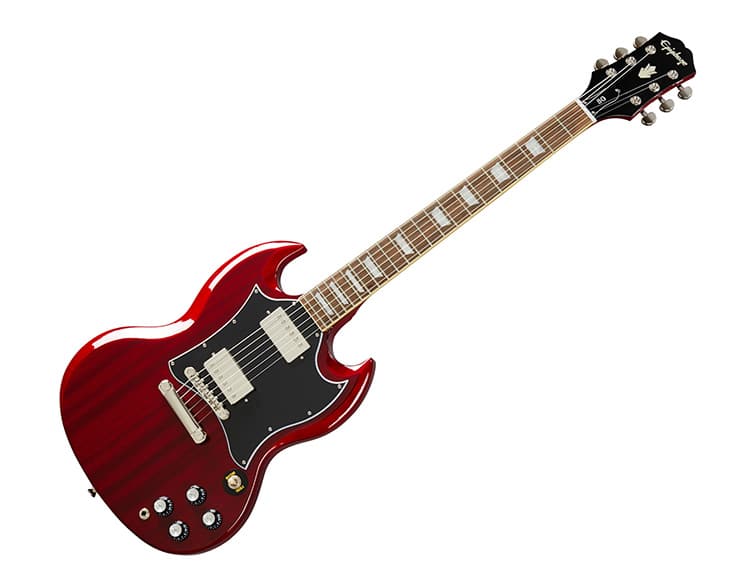
The quality is, as usual from Epiphone, extremely good and the sound is very similar to the Gibson guitar - it has, after all, almost the same characteristics (neck and body made of Magahoni), but slightly cheaper components.
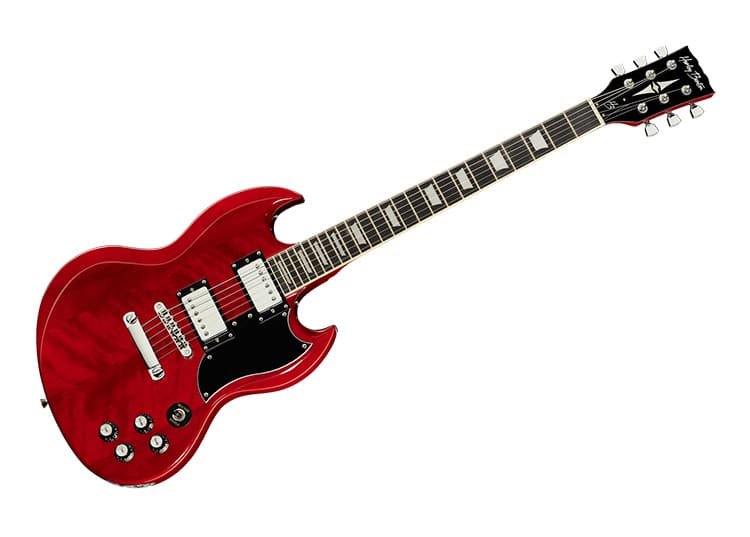
And if you're really looking for the best value for your money, you should definitely check out the Harley Benton DC-580 CH Vintage Series, which costs just €139. For that price, you can hardly go wrong.
Epiphone Casino (Hollowbody Electric Guitar): Best Electric Guitar for Jazz
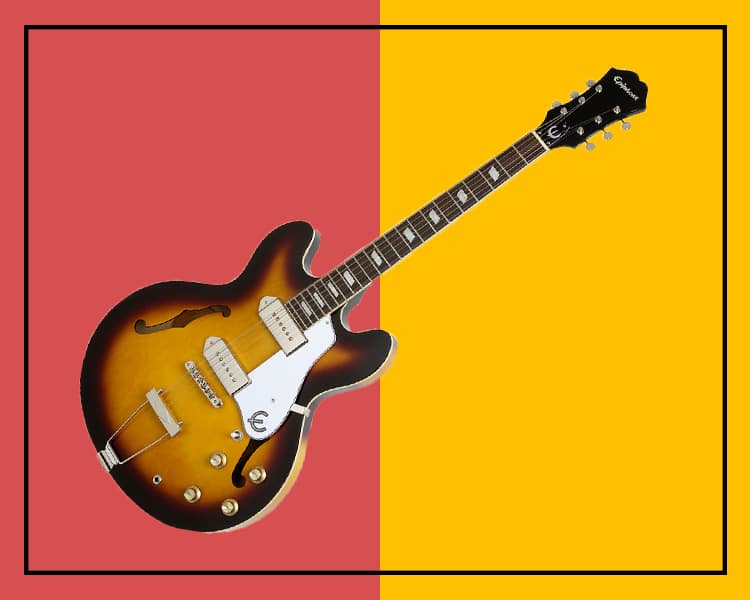
This is a slightly different type of electric guitars than the ones we have seen so far. Semihollow body electric guitars have a hollow and larger body than solid body guitars (normal electric guitars).
As a result, semihollow electric guitars have less sustain and sound warmer than solid body guitars. Semihollow guitars are more susceptible to feedback, so they are not suitable for high-gain genres.
These guitars are also colloquially called jazz guitars, because they are mostly played by jazz guitarists. But they are also often seen in blues.
The Epiphone Casino (589€) is a classic semi-resonant guitar, which was played almost exclusively by John Lennon with the Beatles from around 1965. It is highly praised for its great, clean sound.

As I said, this is not an electric guitar for hard rock solos, but rather for a clean, crisp sound that makes it a very good choice for blues or jazz.
The Epiphone Casino has a little more sustain than other semi-resonant guitars, but this has the small disadvantage of making it more susceptible to feedback.
I definitely recommend this guitar to anyone who plays a lot of jazz. And if you play blues or pop and already have a solid body electric guitar and want to expand your horizons with new sounds, this is also a very good choice.
Electric Guitar FAQ
The headstock, which houses the tuning pegs: They ensure that the strings reach a certain tension (and thus a certain pitch) and maintain the desired tuning. Headless guitars lack a headstock, so the tuning system is located on the bridge or body of the instrument.
The neck to which the fretboard is attached, whose frets are usually arranged according to equal temperament, allowing a minimum range of one semitone. In fretless instruments (less common in guitars), which do not have metal frets, the string comes into direct contact with the fingerboard material.
The body. Depending on the more or less important presence of tone chambers (and their functionality) we speak of: Solid-Body, Semi-Hollow and Hollow-Body guitars.
The bridge, attached to the body, can be fixed or tremolo.
Magnetic pickups (one or more) mounted on the body under the strings, usually of the type single coil (single coil) or double coil (humbucker), or both.
The strings, usually 6 and made of different materials, such as nylon or silks.
In an electric guitar, on the other hand, magnetic pickups generate a magnetic field near the string. It is then magnetized and changes the magnetic field through its vibrations. These oscillations of the resulting magnetic field cause a change in the current flow through the coils around the pickup. An induced current is then generated in these coils.
This electrical signal, which contains the characteristics of the vibrating wire string (frequency, amplitude, etc.), is too weak. It is therefore sent to an amplifier - a guitar amplifier - and only after an appropriate amplification is sent on to one or more speakers.
Before the electrical signal reaches the amplifier, it is often processed by one or more effects that modify its properties, such as EQ's or distortion.
The concept of the electric guitar can be traced back to the intuition of Adolph Rickenbacker, who in 1931 developed the first electromagnetic pickup (a device that can convert string vibrations into electrical impulses) and began to apply this technique to normal acoustic instruments by developing a lap steel guitar called the Frying Pan Guitar in two models (A22 and A25).





